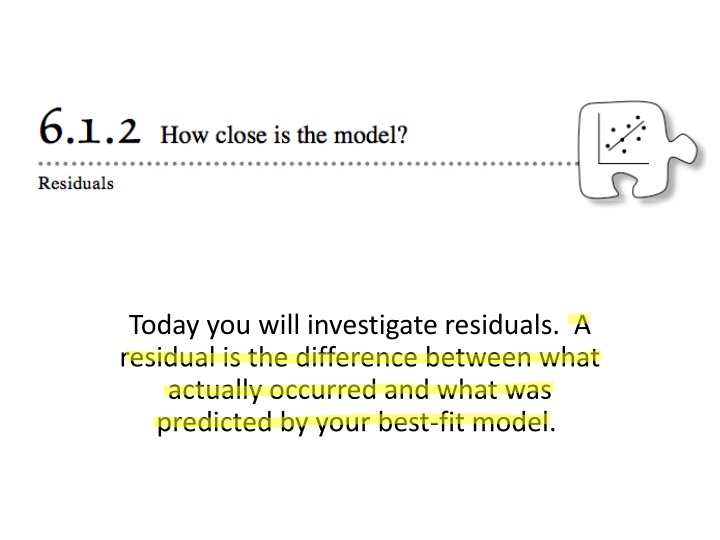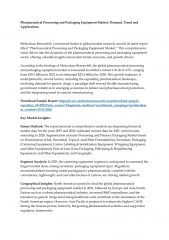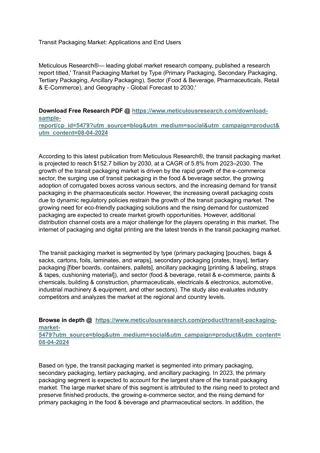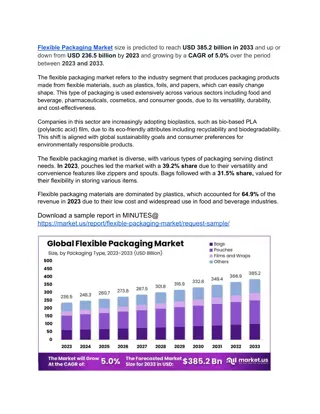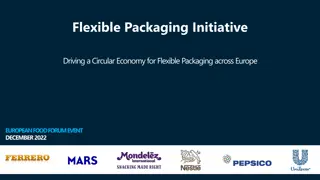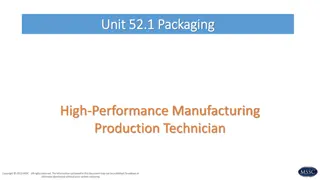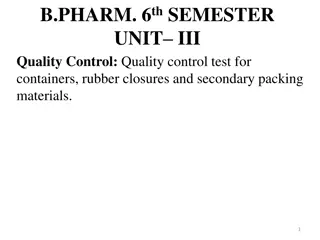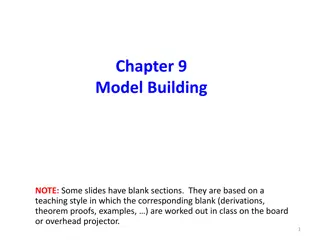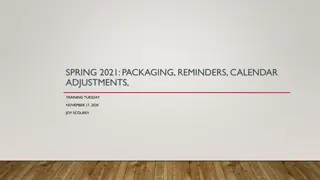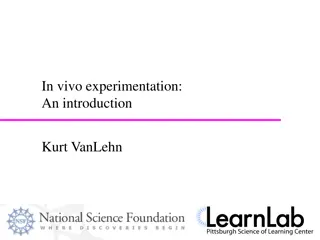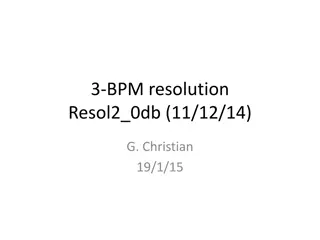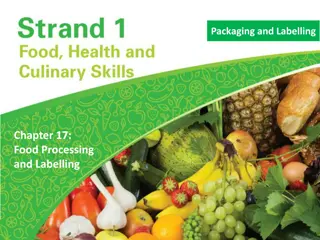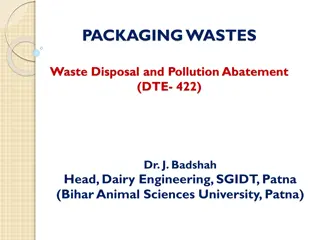Investigating Residuals in Packaging Experimentation
Explore the concept of residuals by analyzing a cereal packaging experimentation conducted by Battle Creek Cereal. Understand how residuals indicate the variance between actual and predicted values. Delve into scenarios where residuals are large or small, interpreting their significance in practical settings. Reflect on the implications of residuals in predicting net weight based on the amount of cardboard used and uncover insights into the relationship between sugar content and calories in cereals.
Download Presentation

Please find below an Image/Link to download the presentation.
The content on the website is provided AS IS for your information and personal use only. It may not be sold, licensed, or shared on other websites without obtaining consent from the author.If you encounter any issues during the download, it is possible that the publisher has removed the file from their server.
You are allowed to download the files provided on this website for personal or commercial use, subject to the condition that they are used lawfully. All files are the property of their respective owners.
The content on the website is provided AS IS for your information and personal use only. It may not be sold, licensed, or shared on other websites without obtaining consent from the author.
E N D
Presentation Transcript
Today you will investigate residuals. A residual is the difference between what actually occurred and what was predicted by your best-fit model.
6-10. Battle Creek Cereal is trying a variety of packaging sizes for their Crispy Puffs cereal. Below is a list of six current packages. Write a few sentences to the executives of Battle Creek Cereal that describe the association, and give an equation the executives can use to predict the net weight of cereal based on the amount of cardboard used for the package. Tell the executives how much cereal a new experimental green package that uses 260 in2of cardboard is expected to hold.
6-11. A residual is a measure of how far a prediction is from what is actually observed. residual = actual predicted The 260 in2box from problem 6-10 will actually hold 355 g of cereal. Your Task: Discuss with your team how you can indicate a residual as a distance on your scatterplot from problem 6-10. Be prepared to share what you discuss with the class. What is the residual for the 260 in2box? What is the difference between a positive and a negative residual in the context of this problem? How could graphing the actual and predicted data points help?
6-12 What is the residual for the 471 in2box? Mark the residual on your scatterplot. Be sure to include units for your residual.
6-13. The warehouse store wants to offer a super-sized 600 in2 box. a) The residual for this box is 1005 grams. What is the actual weight of a 600 in2box? b) Why do you suppose the residual is so large? c) Interpret the meaning of the slope and y- intercept of your model in the context of this problem. Does the y-intercept make sense in the context of the problem?
6-14. Armen was concerned about the amount of sugar in his diet, so he went to the store and collected data from several cereal boxes. Armen used the data to create a model that related the sugar in cereal to calories: s = 16.9 + 0.23c where s is the amount of sugar in grams and c is the number of calories in one cup of cereal. a) What does a negative residual mean in this context? Is a cereal with a positive or negative residual better for Armen s diet? b) Interpret the meaning of the slope and y- intercept in the context of the problem. Does the y-intercept make sense in the context of the problem?
6-15. LEARNING LOG Work with your team to summarize what you have discovered about residuals today. When you have come to an agreement, write your ideas as a Learning Log entry. Title this entry Residuals and label it with today s date.
The slope of a linear association plays the same role as the slope of a line in algebra. Slope is the amount of change we expect in the dependent variable ( y) when we change the independent variable ( x) by one unit. When describing the slope of a line of best fit, always acknowledge that you are making a prediction, as opposed to knowing the truth, by using words like predict, expect, or estimate. The y-intercept of an association is the same as in algebra. It is the predicted value of the dependent variable when the independent variable is zero. Be careful. In statistical scatterplots, the vertical axis is often not drawn at the origin, so the y-intercept can be someplace other than where the line of best fit crosses the vertical axis in a scatterplot.
Also be careful about extrapolating the data too far making predictions that are far to the right or left of the data. The models we create can be valid within the range of the data, but the farther you go outside this range, the less reliable the predictions become. When describing a linear association, you can use the slope, whether it is positive or negative, and its interpretation in context, to describe the direction of the association.
